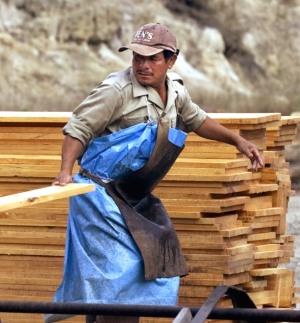
Share
Attachments
RainforestAlliance_Honduras_English_0.pdf
Keywords
Authors/Partners
Rainforest Alliance
Strengthening the Value Chain for Indigenous and Community Forestry Operations
Strengthening the value chain for indigenous and community forestry operations through increased investment and use of technical assistance
CHALLENGE
Spanish versions of the three case studies:
|
The link between sustainable forest management practices and community benefits has not been well documented. Likewise, the connection between the sale of certified products and conservation outcomes is sometimes lost amid general skepticism. Part of the reason investments in community forestry operations are not well understood is that studies tend to rely on anecdotal evidence rather than income and productivity data.
APPROACH
Building on the successful work of the Rainforest Alliance's Sustainable Forestry Division in Mexico and Central America, PROFOR co-financed three case studies documenting changes in income, return on investment and the role of technical assistance in bringing investments to their full potential in Mexico, Guatemala and Honduras.
The case studies are expected to motivate community forestry operations to invest in their operations and strive for improved competitiveness.
MAIN FINDINGS
- In Mexico, with an investment of $1.1 million over three years, the operation increased sawmilling efficiencies and lowered production costs by 43% without sacrificing jobs. A greater focus on secondary processing and investment in their business led to a change in annual profits from minus $561,646 to plus $1.7 million.
- In Guatemala, FSC certified community concessions increased their revenues by 209% to $5.8 million. Improved saw milling efficiencies and higher grades of mahogany along with FSC certified mahogany price increases drove the increase in revenues as did the addition of a FSC certified non-timber product. Employment increased for women though value added processing for non-timber products. Investments by communities themselves have been modest but donor investments in training and technical assistance have probably exceeded $10 million.
- In Honduras, cooperatives banded together to provide semi-processed mahogany for export to certified markets, changing their production chain and adopting sustainable forest management practices. With only a 19% increase in volume harvested, revenues have increased by 128% to $579,375. Actual production costs rose 40% from 2006 to 2008, due to increased costs of forest management and taxes, as well as the extra care needed to produce quality mahogany grades. The cooperatives have invested over $113,000 in simple machinery.
RESULTS
The results of the three case studies were presented at the World Forestry Congress in Buenos Aires, Argentina in October 2009. The Mexico case study was presented at the Expo Forestal in Mexico in September 2009. In both cases, the data on production, efficiency and community benefits was well received.
The indicators used in these cases studies will be useful for measuring impact in other communities. A new forestry project with CONAFOR/UNDP/GEF and the Rainforest Alliance will use the same methodology and variables in Mexico to measure community level impacts on wood harvesting, usage and income. The Rainforest Alliance is also starting two new community forestry projects in Ghana and Cameroon which will use a subset of these variables, adapted for West Africa.
For stories and updates on related activities, follow us on twitter and facebook , or subscribe to our mailing list for regular updates.
Author : Rainforest Alliance
Last Updated : 06-16-2024








